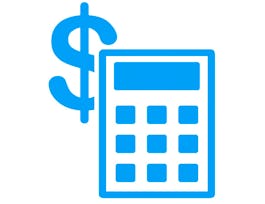This course focuses on learning how to develop and manage a schedule. The first module provides an overview of the Construction Scheduling course. The second module introduces bar or Gantt charts and how they are used as scheduling tools. During the third module, learners will create activity precedence diagrams, also referred to as activity on node diagrams, which graphically represent the construction activities in a project and their relationships. The fourth module provides an overview of the types of construction activity relationships encountered in a construction project and how to represent them in an activity precedence diagram. Forward and backward pass calculations are covered in the fifth module, and during the sixth module, Professor Odeh discusses the importance of critical paths, including what it is and why it is important.


Construction Scheduling
This course is part of Construction Management Specialization
Taught in English
Some content may not be translated

Instructor: Ibrahim Odeh, Ph.D., MBA
46,617 already enrolled
Included with 
Course
(2,082 reviews)
92%
Recommended experience
What you'll learn
The key project scheduling techniques and procedures
How to develop and manage a schedule and understand scheduling tools such as bar charts, activity on arrow, and activity on nodes
The multiple relationships that connect all the construction activities from start to finish
The importance of the critical path in a project network and project activities float
Skills you'll gain
Details to know

Add to your LinkedIn profile
12 quizzes
Course
(2,082 reviews)
92%
Recommended experience
See how employees at top companies are mastering in-demand skills

Build your subject-matter expertise
- Learn new concepts from industry experts
- Gain a foundational understanding of a subject or tool
- Develop job-relevant skills with hands-on projects
- Earn a shareable career certificate


Earn a career certificate
Add this credential to your LinkedIn profile, resume, or CV
Share it on social media and in your performance review

There are 16 modules in this course
The first module provides an overview of the Construction Scheduling course and the topics that will be covered. Learners will discover the relationships connecting construction activities, how to perform scheduling procedures, how to determine critical path and more. Professor Odeh will describe the differences between calendar dates and work dates and teach how to deal with uncertainty in construction projects.
What's included
1 video2 readings1 plugin
The second module introduces bar or Gantt charts and how they are used as scheduling tools. Bar charts represent a project work item or activity as a time scaled bar; the length of which represents the planned duration of a construction activity.
What's included
3 videos1 quiz1 discussion prompt
In this module, learners will create Activity Precedence Diagrams, also referred to as Activity on Node Diagrams, which graphically represent the construction activities in a project and their relationships.
What's included
3 videos1 reading
This module provides an overview of the types of construction activity relationships encountered in a construction project and how to represent them in an activity precedence diagram.
What's included
5 videos1 reading1 quiz1 discussion prompt
Forward and Backward Pass Calculations are covered in this module. Forward Pass Calculations determine the minimum dates at which each construction activity can be performed and, ultimately, the minimum duration of a construction project. Backward Pass Calculations compute the latest dates by which each construction activity can be performed without increasing the projects minimum duration.
What's included
4 videos1 reading1 quiz
Professor Odeh discusses the importance of critical path in this module including what it is and why it is important. Learners will identify a critical path in a project and how to determine a critical path in different relationships.
What's included
6 videos1 reading1 quiz1 discussion prompt
Professor Odeh introduces the types of floats in a construction project including; total float, free float, interfering float and independent float.
What's included
5 videos1 reading1 discussion prompt
In this module, the difference between working dates and calendar dates is explained and how to chart both in a project plan.
What's included
3 videos1 reading1 quiz
Activity on Arrow diagrams are the topic for this module. Professor Odeh will discuss how to draw an activity on arrow diagram and how to number the nodes. Forward and Backward Pass calculations and determining the duration of a project are also covered.
What's included
8 videos1 reading2 quizzes1 discussion prompt
The Program Evaluation and Review Technique (PERT) is introduced in this module which relates to uncertainty in estimating the duration of construction activities in a project schedule. PERT helps project managers determine the probability of a project being completed in a certain number of days.
What's included
6 videos1 reading1 discussion prompt
Jennifer Buermann, of the STV Group, discusses the role of the scheduler in a construction project and how to determine if a project is on track to meet the estimated goals. Also covered are ways to adjust to ensure the project stays on track.
What's included
3 videos1 reading1 quiz
Professor Odeh introduces linear construction; projects that have linear, or repetitive, properties. Also covered is the Line of Balance scheduling method which is a way of allocating resources for repetitive processes.
What's included
5 videos1 reading2 quizzes
Dareen Salama, of the STV Group, discusses the technology applications used for scheduling. Dareen provides an overview of the applications used for scheduling development, schedule analysis, sharing and collaboration and visualization.
What's included
12 videos2 readings1 quiz1 discussion prompt
Christopher Toomey, Senior Vice President of AECOM Global Programs, discussed scheduling for large programs also known as the Integrated Master Scheduler. Mr. Toomey illustrates how to develop and maintain the Integrated Master Schedule and identifies key features.
What's included
3 videos1 reading1 discussion prompt
Dr. Eduardo Gamez, Deputy Director of Risk Management for AECOM, introduces Risk Allocation and Planning. Dr. Gamez discusses the importance of formal risk management and how to use risk assessment as a support tool for planning and scheduling.
What's included
6 videos1 reading
Sam Spata, of MethodLean, discusses lean design and lean scheduling. The concept of Flow is introduced, the process of how to get from the beginning to the end of a project, as a measurable addition of value.
What's included
4 videos1 reading1 quiz1 discussion prompt1 plugin
Instructor

Offered by
Recommended if you're interested in Business Strategy

Columbia University

Columbia University

Columbia University

Columbia University
Why people choose Coursera for their career




Learner reviews
Showing 3 of 2082
2,082 reviews
- 5 stars
79.80%
- 4 stars
17.21%
- 3 stars
2.35%
- 2 stars
0.28%
- 1 star
0.33%
New to Business Strategy? Start here.

Open new doors with Coursera Plus
Unlimited access to 7,000+ world-class courses, hands-on projects, and job-ready certificate programs - all included in your subscription
Advance your career with an online degree
Earn a degree from world-class universities - 100% online
Join over 3,400 global companies that choose Coursera for Business
Upskill your employees to excel in the digital economy
Frequently asked questions
Access to lectures and assignments depends on your type of enrollment. If you take a course in audit mode, you will be able to see most course materials for free. To access graded assignments and to earn a Certificate, you will need to purchase the Certificate experience, during or after your audit. If you don't see the audit option:
The course may not offer an audit option. You can try a Free Trial instead, or apply for Financial Aid.
The course may offer 'Full Course, No Certificate' instead. This option lets you see all course materials, submit required assessments, and get a final grade. This also means that you will not be able to purchase a Certificate experience.
When you enroll in the course, you get access to all of the courses in the Specialization, and you earn a certificate when you complete the work. Your electronic Certificate will be added to your Accomplishments page - from there, you can print your Certificate or add it to your LinkedIn profile. If you only want to read and view the course content, you can audit the course for free.
If you subscribed, you get a 7-day free trial during which you can cancel at no penalty. After that, we don’t give refunds, but you can cancel your subscription at any time. See our full refund policy.

